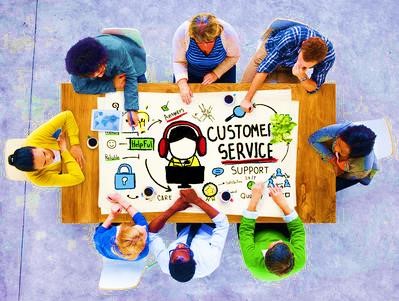Published in “The ACA Group” website, November, 2010
Polling my clients and contacts, I’ve found there’s no exception to the rule that customer loyalty is no longer a nice-to-have; instead, it must be an assumption in today’s “new normal” business environment. A perfect storm is brewing – just as companies have cut back dramatically in spending and on resources; customers are demanding higher service levels. Since cash is tight across the board and as the number of items that leaders can control dwindles, an interesting phenomenon has occurred. Suddenly, service expectations have skyrocketed.
Thus, metrics to track customer service are vital. Once you’ve lost a customer, it is always a tall order to gain the customer back – and, if you do, it’s typically at a discount in pricing. Instead of running in circles to achieve a lower profit in the future, it would behoove business leaders to consider which metrics are valuable in measuring customer loyalty. A few questions to consider in developing metrics include:
- How easy is it to do business with your company?In today’s economy, those who aren’t easy to do business with will lose customers. This might be a bit of a challenge to measure; however, one of the best ways to get a pulse is to ask. Talk with your customers. Find out what they think and what they need. Pay attention to what they say.This can be accomplished in a variety of ways – through Executive sales visits, a phone survey, a questionnaire etc. Ask your customer service employees and other employees who interact with the customer. They will provide valuable feedback if you have a culture encouraging feedback. To that point, I’ve never seen a company with unhappy employees provide exceptional service. So, if you don’t receive valuable feedback from them, stop and figure out why.
- Do you add value? This is another key question in today’s business environment. It is no longer acceptable to deliver a perfect order day-in, day-out without adding value. As expectations are elevated, those companies who are continually looking for ways to add value for their customers will be those who develop customer loyalty. Again, a challenge for typical metrics systems; however, it is achievable. While you are talking with your customers, ask them about your service. Find out what’s meaningful to them.
- Have you forgotten your traditional customer service metrics?Last but not least, don’t forget to track your traditional customer service metrics – on-time performance, service levels, lead time performance, perfect orders etc.I’ve seen an interesting trend arise recently in that lead times are increasing in importance. As cash is tight and customer demand is volatile, quick turnaround is valued.
Once you measure these areas, do not forget the most important next step – develop action plans as appropriate and implement. Feedback is a waste of time and money if not reviewed and addressed if appropriate.



